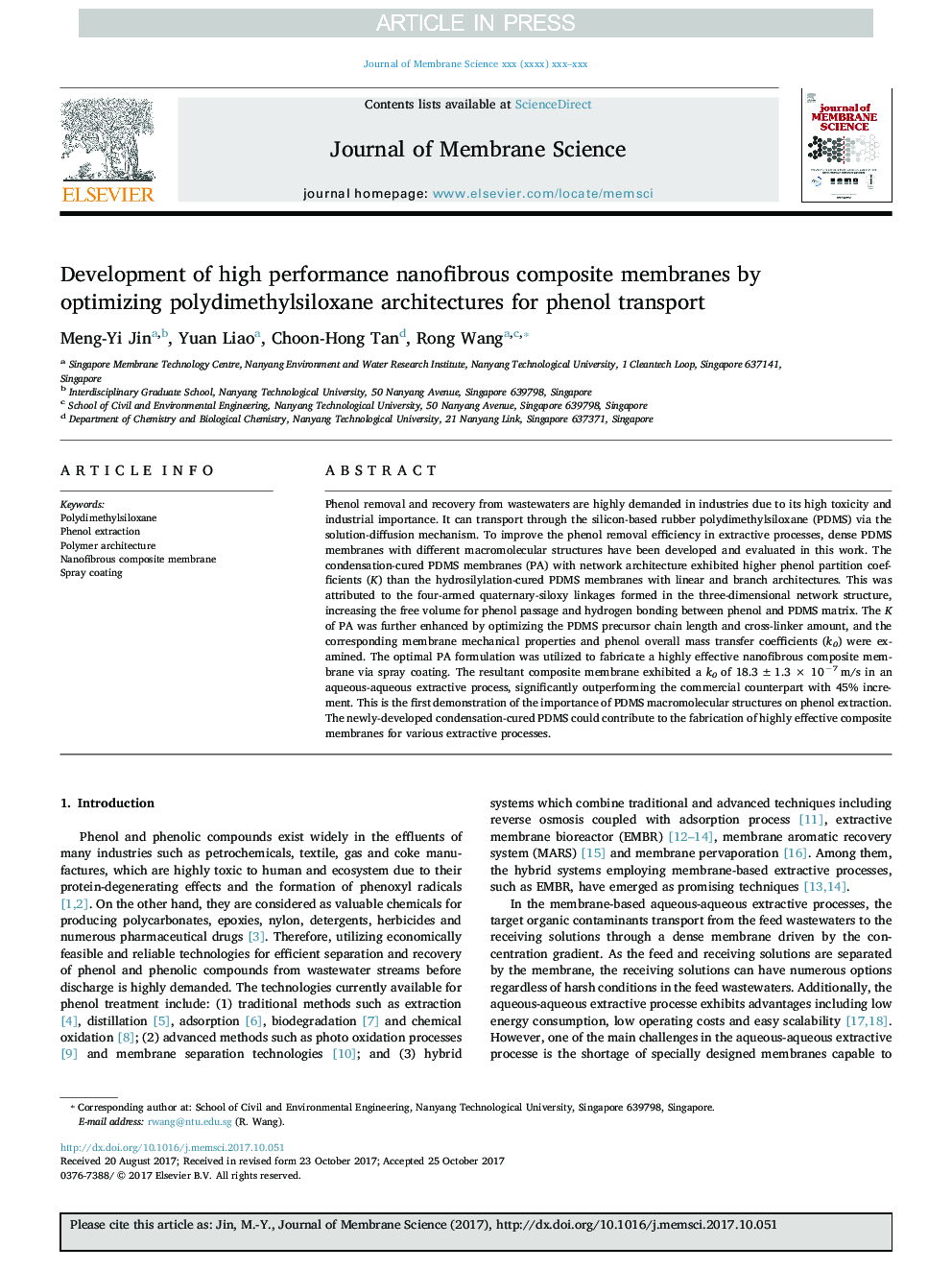| Article ID | Journal | Published Year | Pages | File Type |
|---|---|---|---|---|
| 7020245 | Journal of Membrane Science | 2018 | 11 Pages |
Abstract
Phenol removal and recovery from wastewaters are highly demanded in industries due to its high toxicity and industrial importance. It can transport through the silicon-based rubber polydimethylsiloxane (PDMS) via the solution-diffusion mechanism. To improve the phenol removal efficiency in extractive processes, dense PDMS membranes with different macromolecular structures have been developed and evaluated in this work. The condensation-cured PDMS membranes (PA) with network architecture exhibited higher phenol partition coefficients (K) than the hydrosilylation-cured PDMS membranes with linear and branch architectures. This was attributed to the four-armed quaternary-siloxy linkages formed in the three-dimensional network structure, increasing the free volume for phenol passage and hydrogen bonding between phenol and PDMS matrix. The K of PA was further enhanced by optimizing the PDMS precursor chain length and cross-linker amount, and the corresponding membrane mechanical properties and phenol overall mass transfer coefficients (k0) were examined. The optimal PA formulation was utilized to fabricate a highly effective nanofibrous composite membrane via spray coating. The resultant composite membrane exhibited a k0 of 18.3 ± 1.3 à 10â7 m/s in an aqueous-aqueous extractive process, significantly outperforming the commercial counterpart with 45% increment. This is the first demonstration of the importance of PDMS macromolecular structures on phenol extraction. The newly-developed condensation-cured PDMS could contribute to the fabrication of highly effective composite membranes for various extractive processes.
Keywords
Related Topics
Physical Sciences and Engineering
Chemical Engineering
Filtration and Separation
Authors
Meng-Yi Jin, Yuan Liao, Choon-Hong Tan, Rong Wang,
